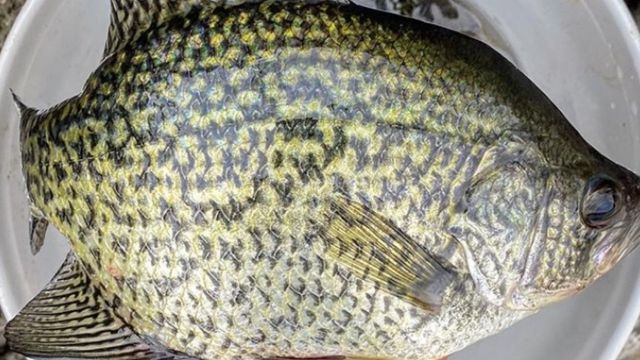
How To Fish Brush Piles For Big Fall Crappie
When the air cools and the leaves turn colors signaling the arrival of fall fishing, crappie make a run for the shallows. Like the spring migration to the shallows, the autumn run triggers some of the best action of the year if you can follow the crappie’s fall transition.
Where To Find Big Fall Crappie
Credit: David Yang
On lakes lacking natural wood cover, brush piles sunken by anglers become key targets for finding crappie moving from deep water to the shallows in the fall.
When the water temperature dips into the low 70s or upper 60s in early fall, you can search for crappie in deeper brush piles near mouths of coves.
The Best Baits For Brushpile Crappie
Credit: David Yang
The most effective methods to catch these fish are casting a minnow hooked on a 1/16-ounce plastic tube jig to the brush or vertically presenting the lure in the cover. In clear water, try tubes in white with a clear tail, blue-and-white, or clear with red and blue flake color combinations. The best dirty water colors for tubes are black-and-chartreuse or red-and-chartreuse.
The fall turnover usually triggers a massive fish departure from the main channel to the coves. A couple of weeks after the turnover, crappie move into the coves after shad and set up ambush points in brush piles near docks along creek channel banks or secondary points. The brush piles range in depth from 10 to 15 feet deep, and the crappie will either suspend above the cover or burrow down in the brush.
Docks with fish-cleaning tables, benches and chairs close to the water, rod holders, and minnow buckets are prime spots to search for underwater brush.
Crappie move into any available cover 6 to 8 feet deep and sometimes as shallow as 3 to 4 feet when the water temperature dips into the low 60s and upper 50s. You can catch crappie twitching a jig-and-cork combination around shallow brush or casting just a jig to the wood cover.
Weather For Catching Big Fall Crappie
Credit: David Yang
Weather determines how long the crappie remain in shallow water. Still, once the water temperature drops below 45 degrees, crappie vacate the shallows and move toward the main channel, following the same route they took into the coves. Work a jig in brush piles around docks along deeper structure, such as creek channel bends, until the fish have migrated to their wintertime sanctuaries of brush piles 15 to 20 feet deep on the main lake or in a creek channel.
Updated September 20th, 2021 at 8:25 AM CT
